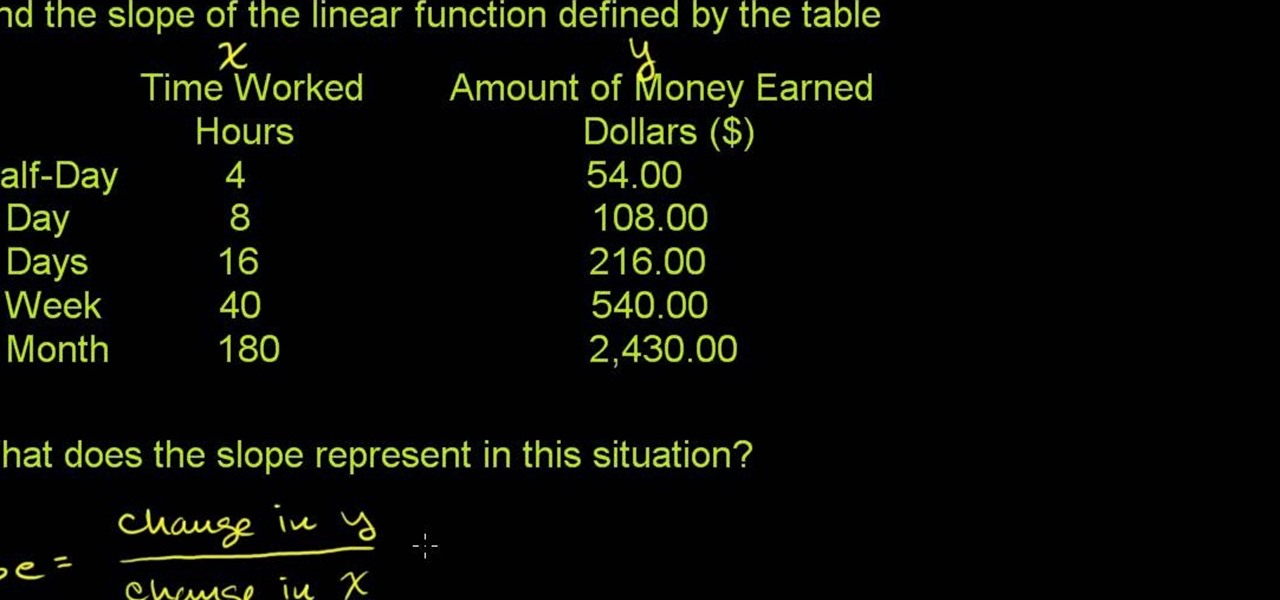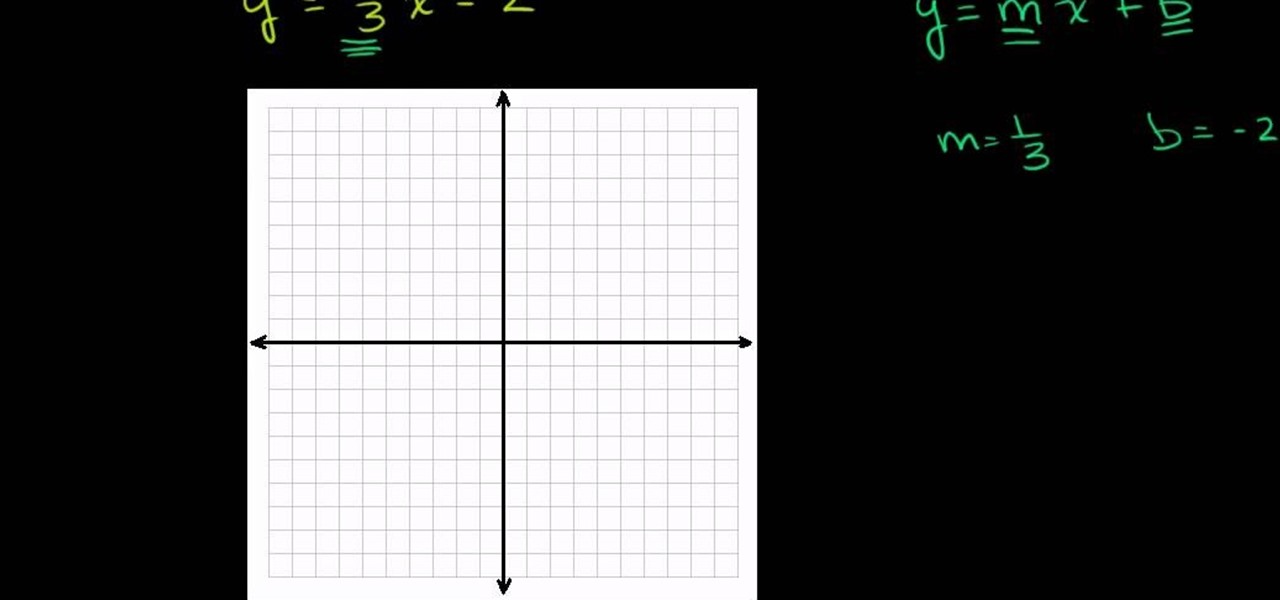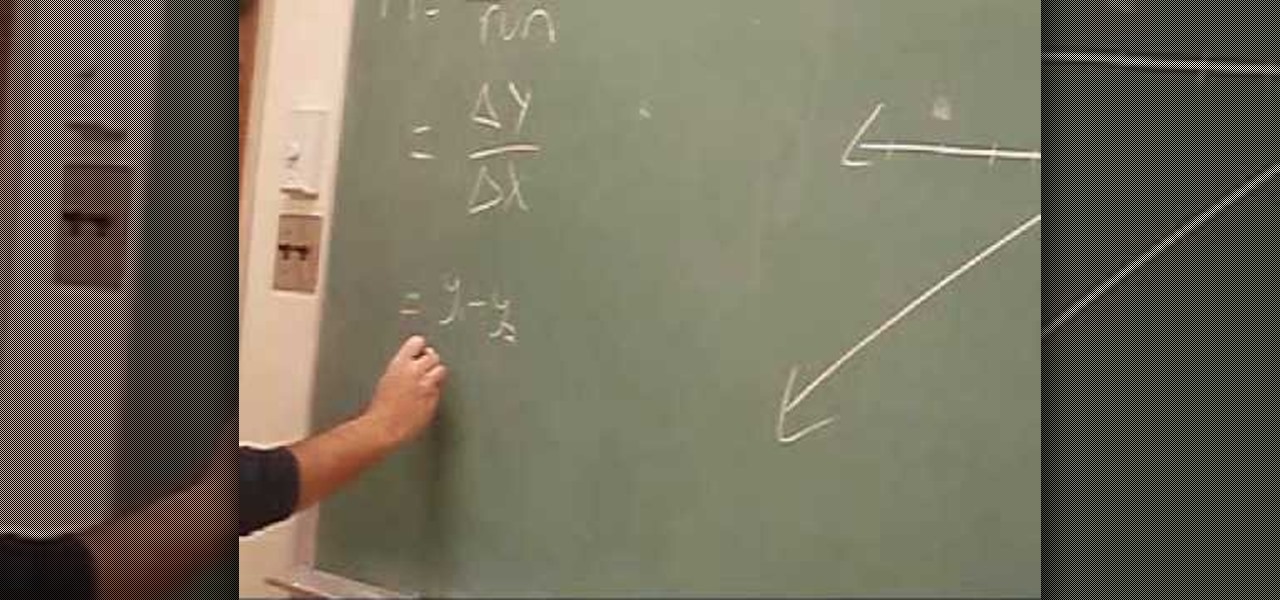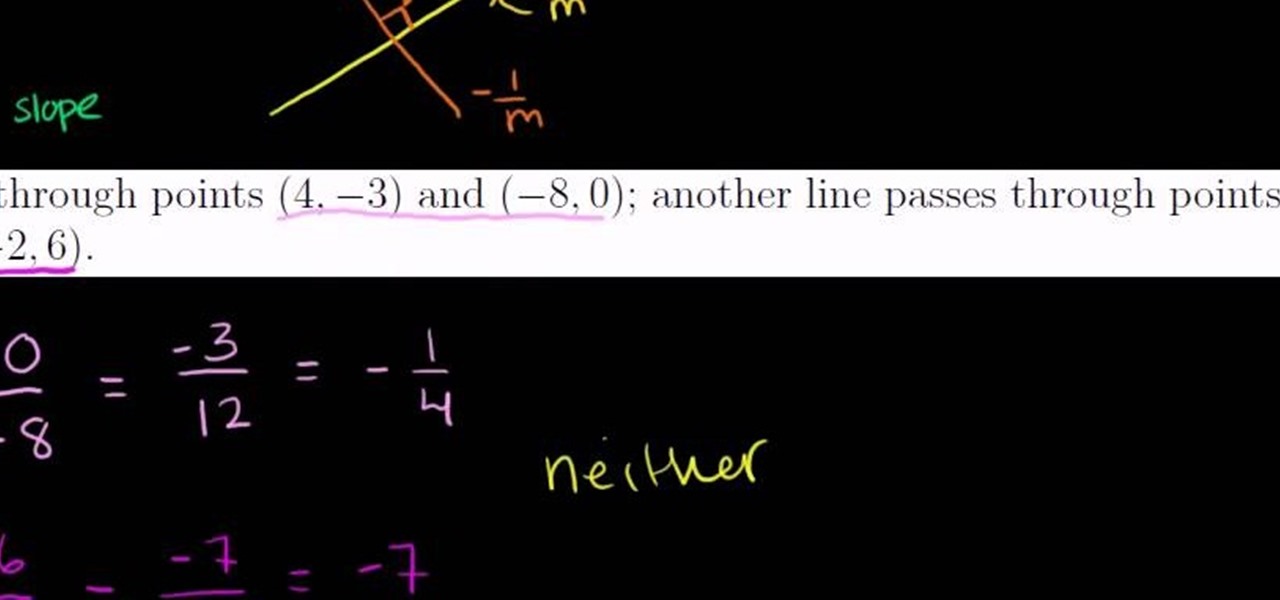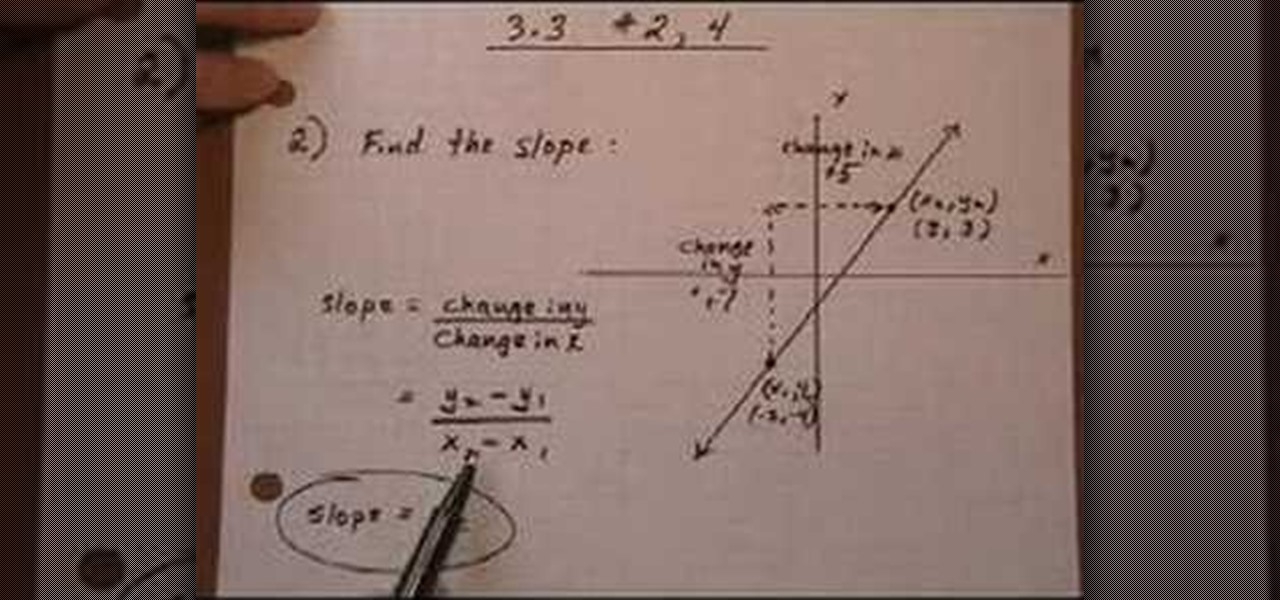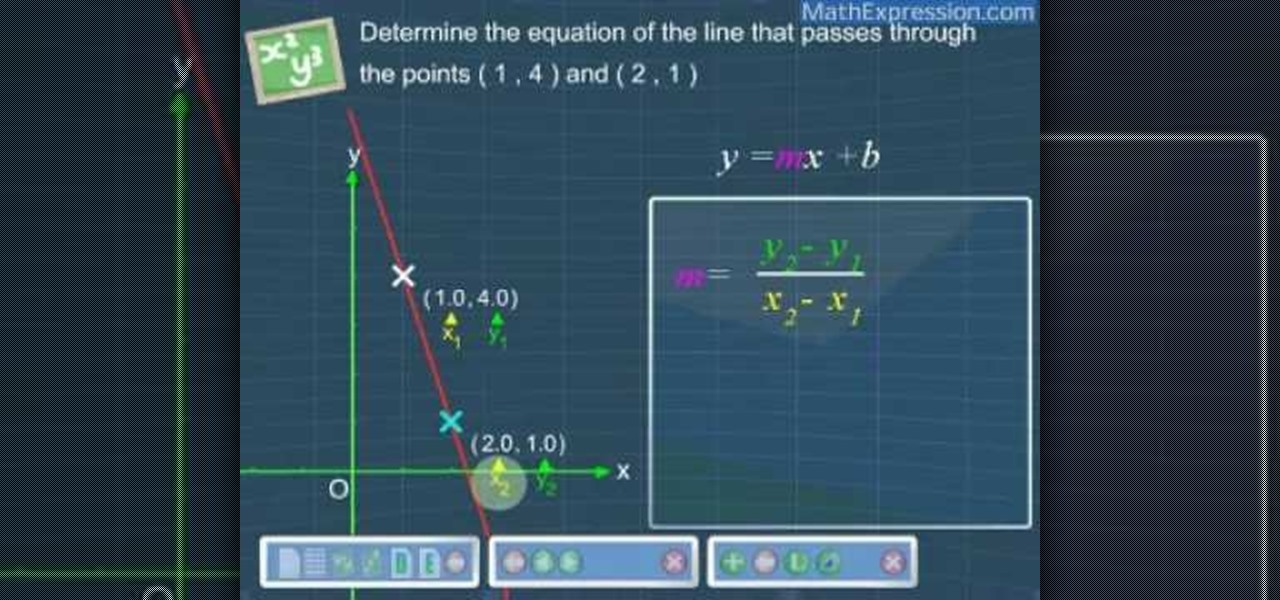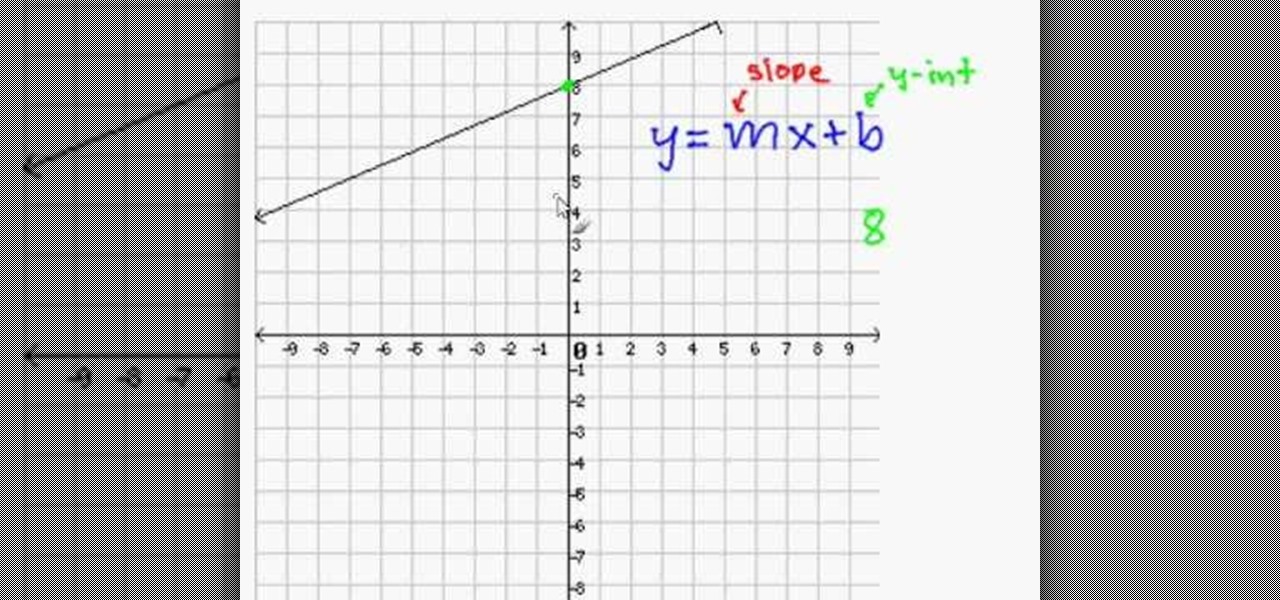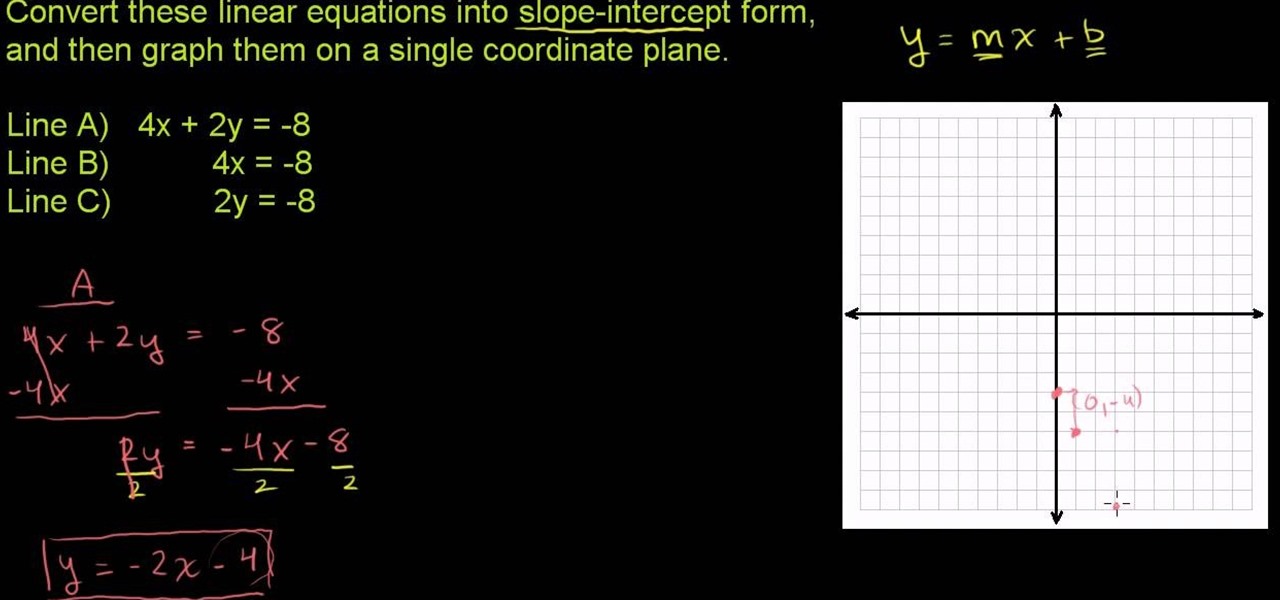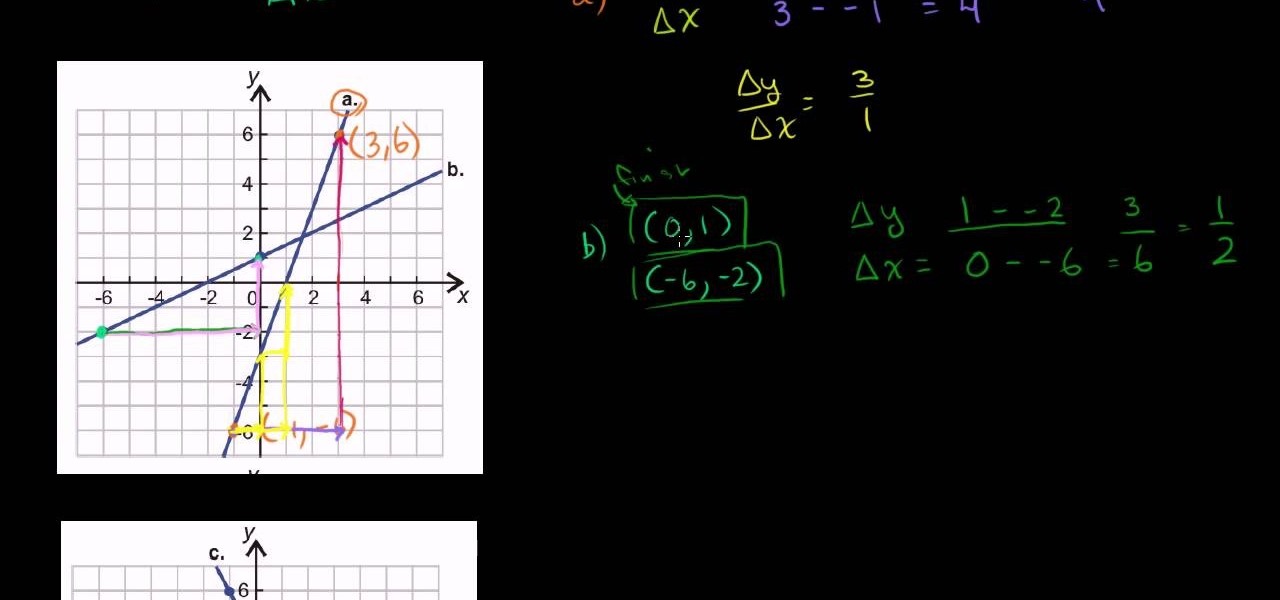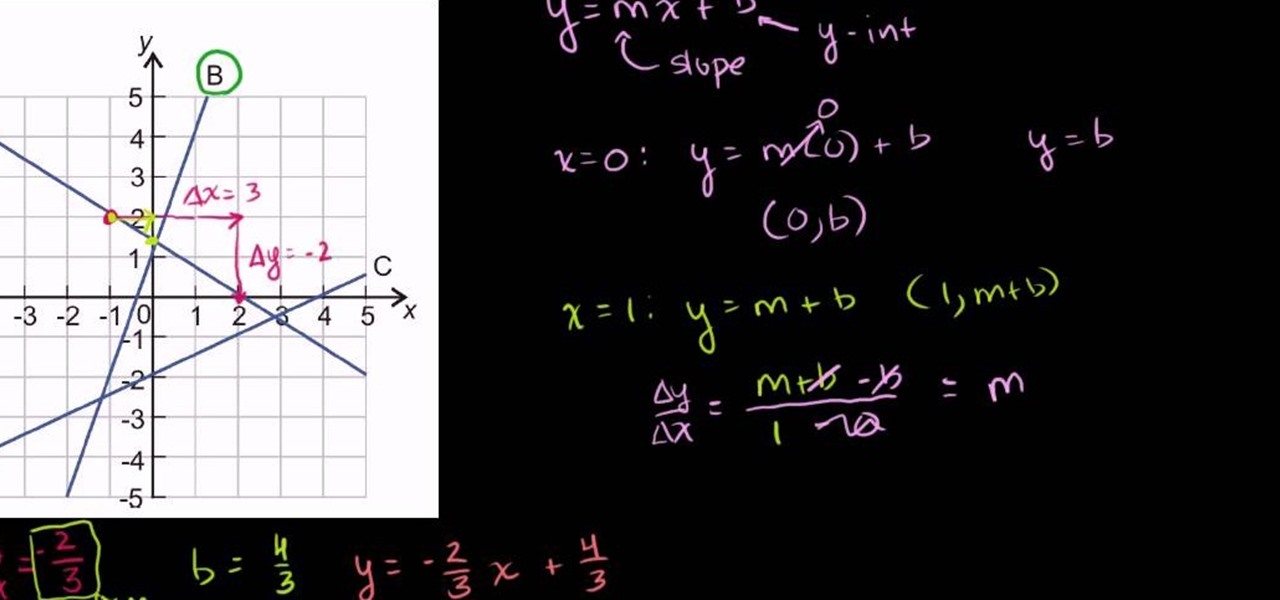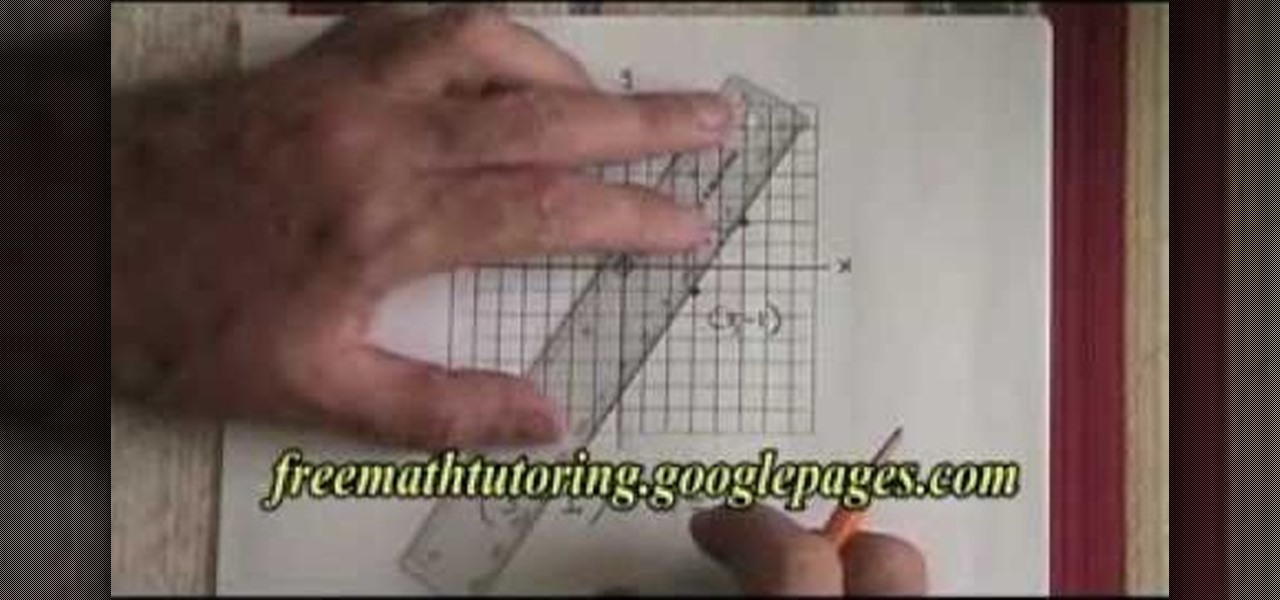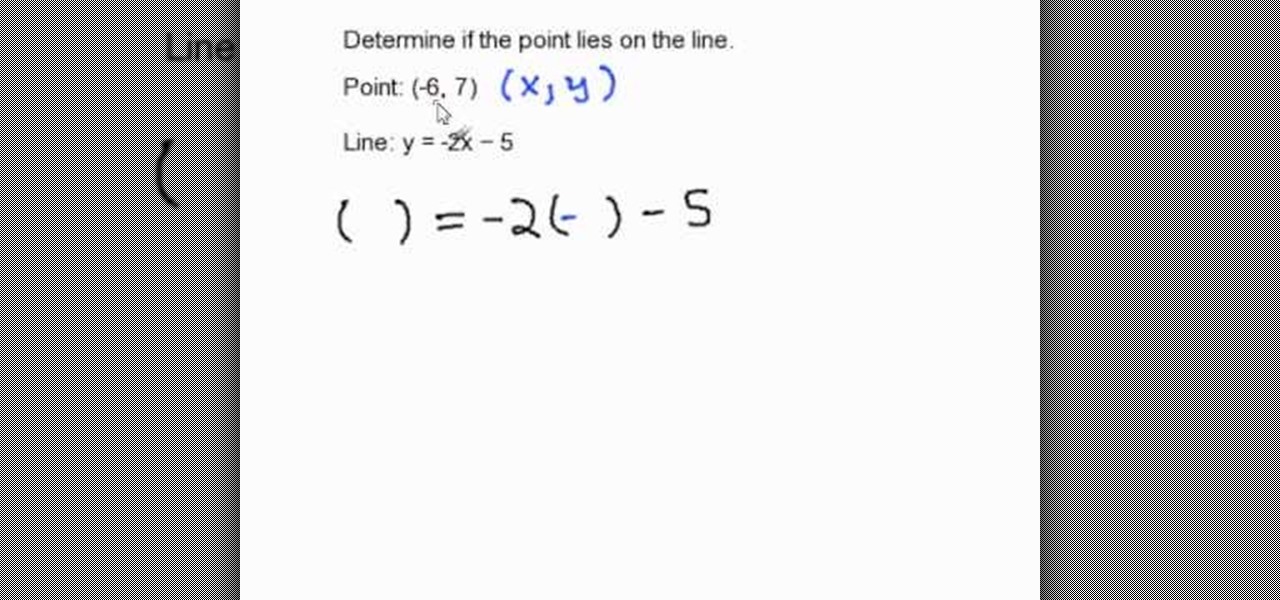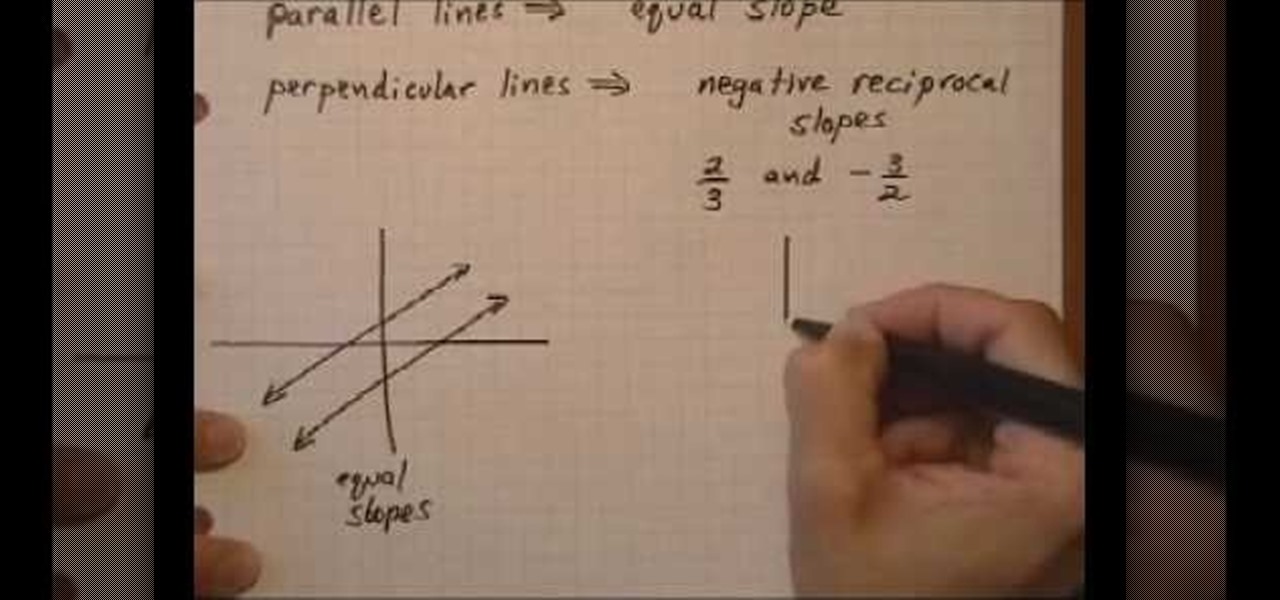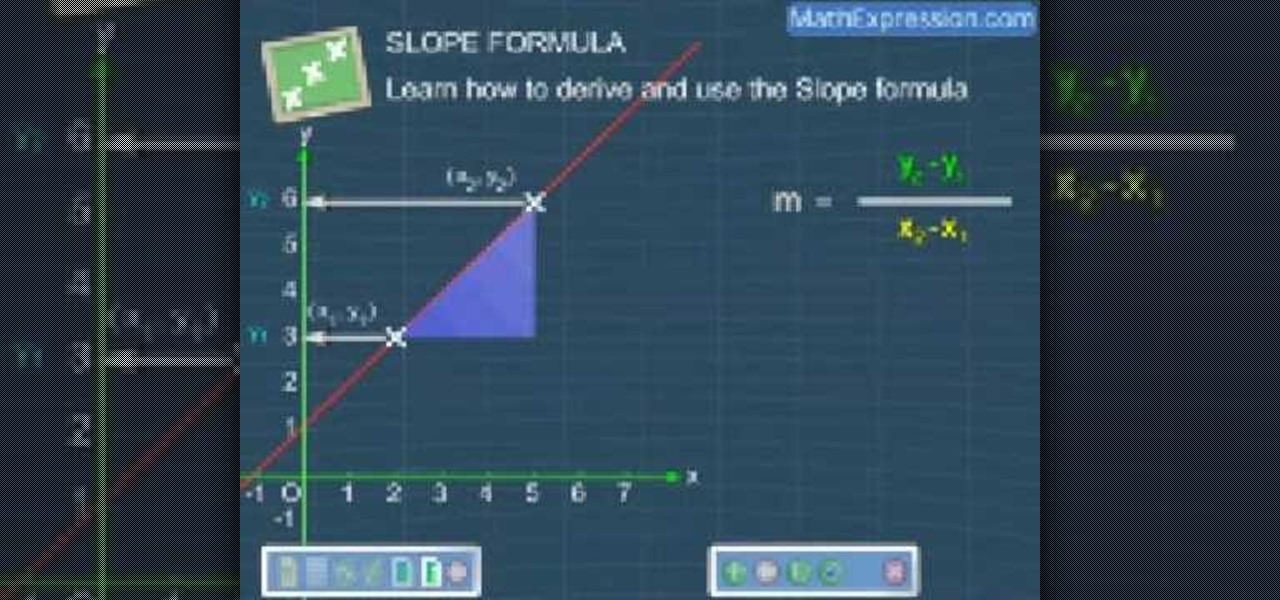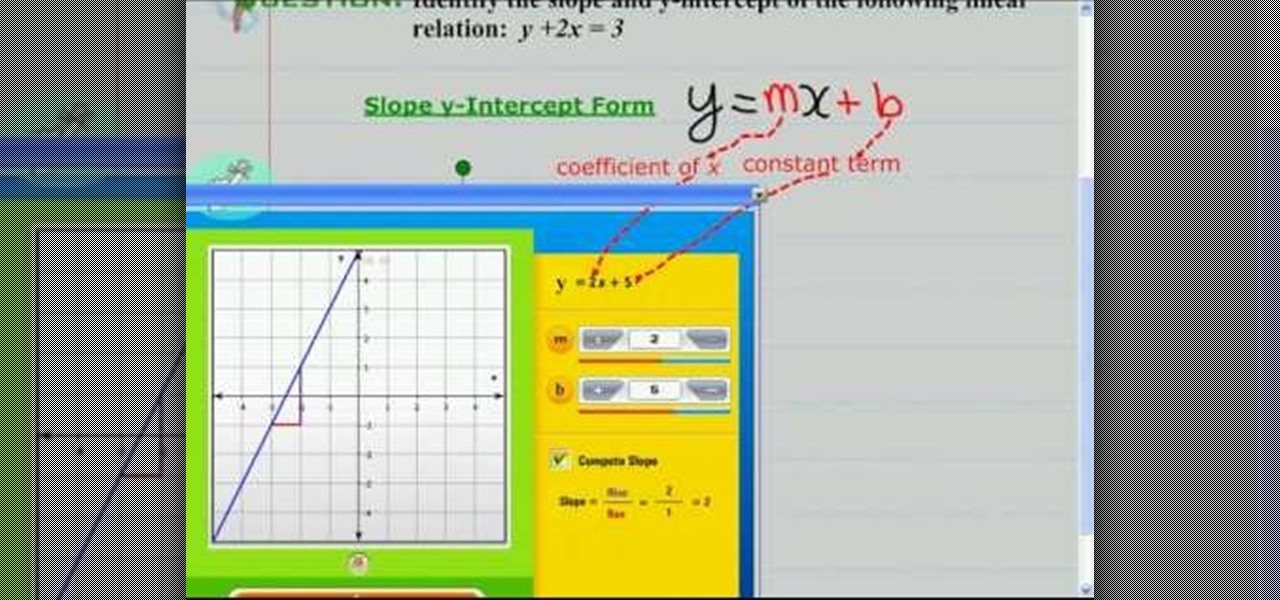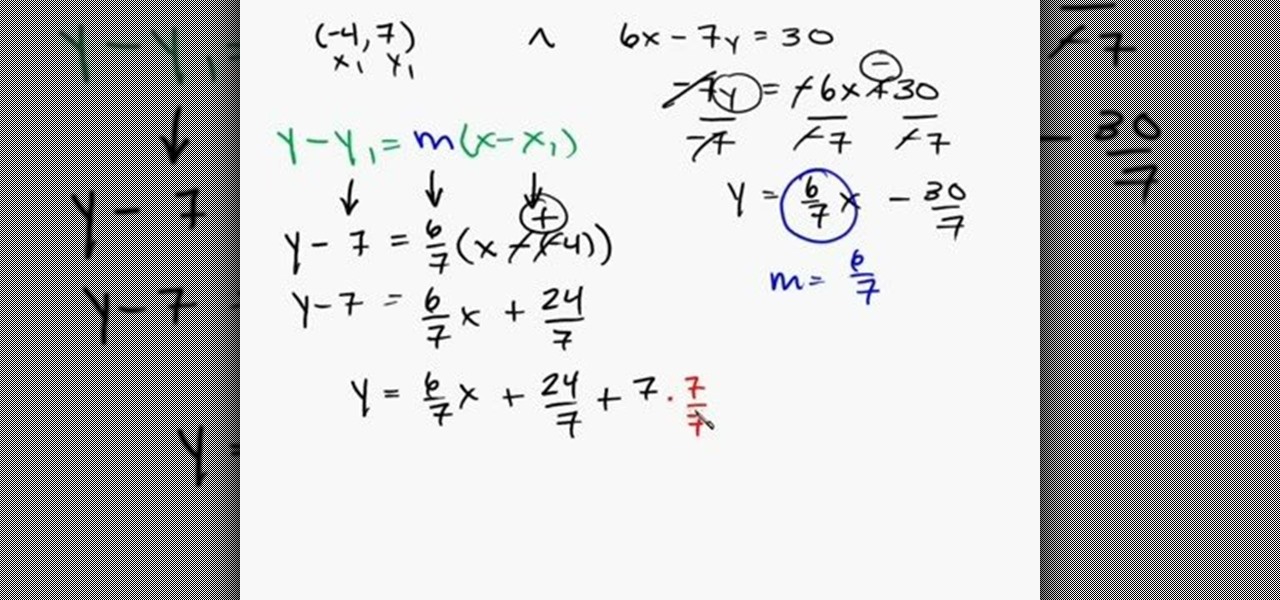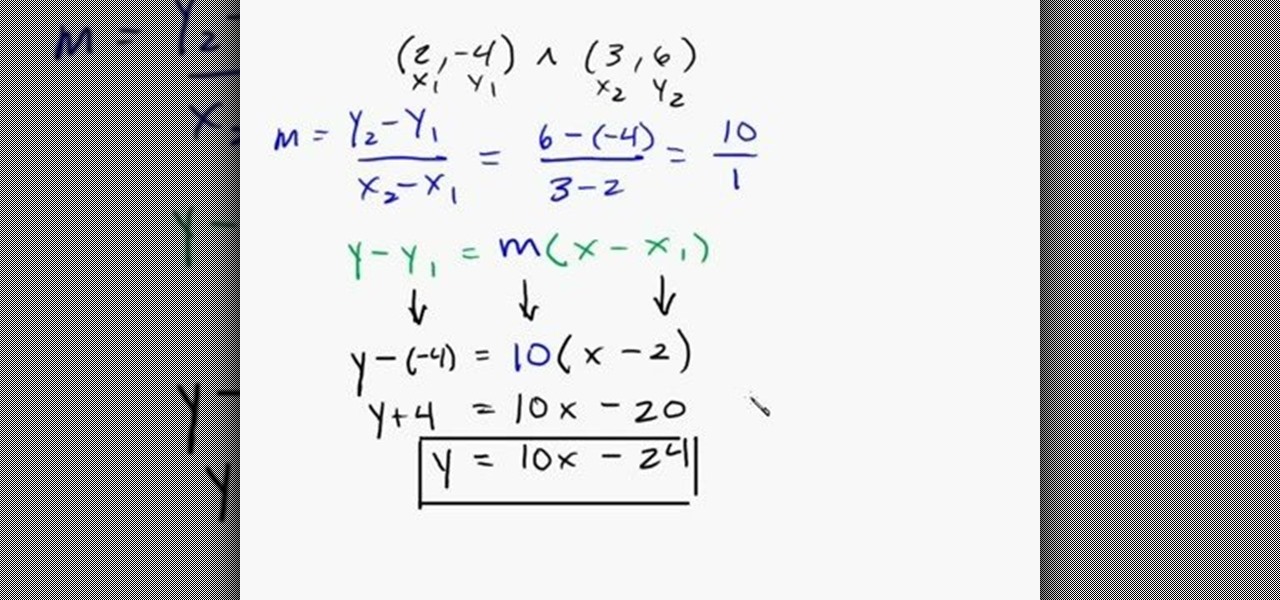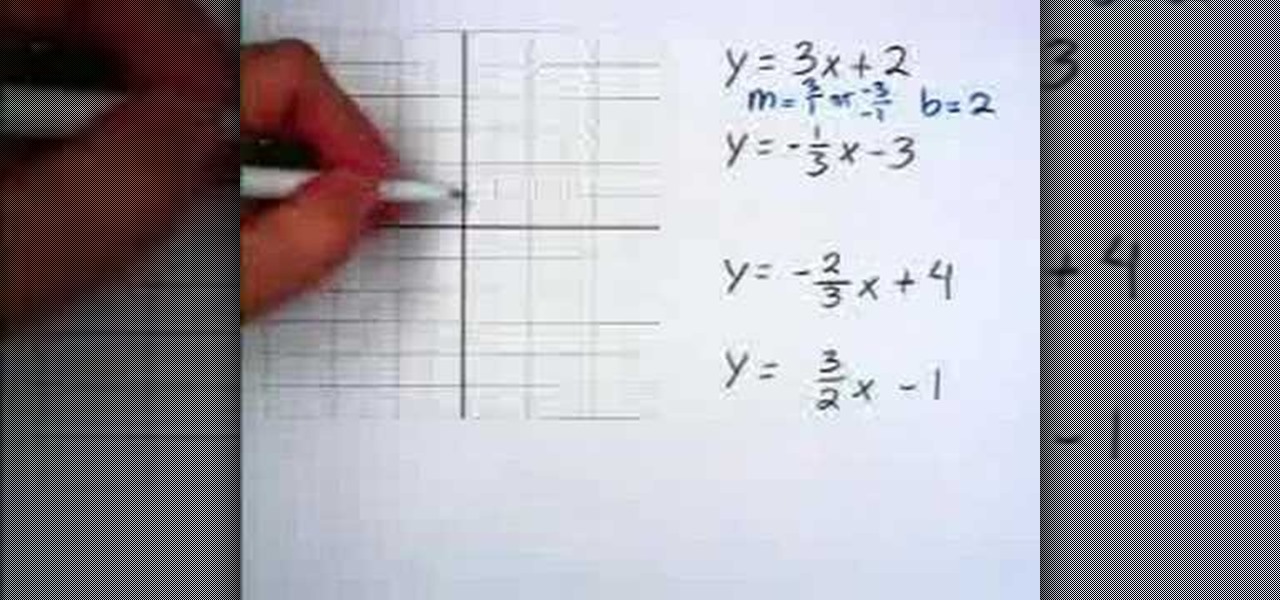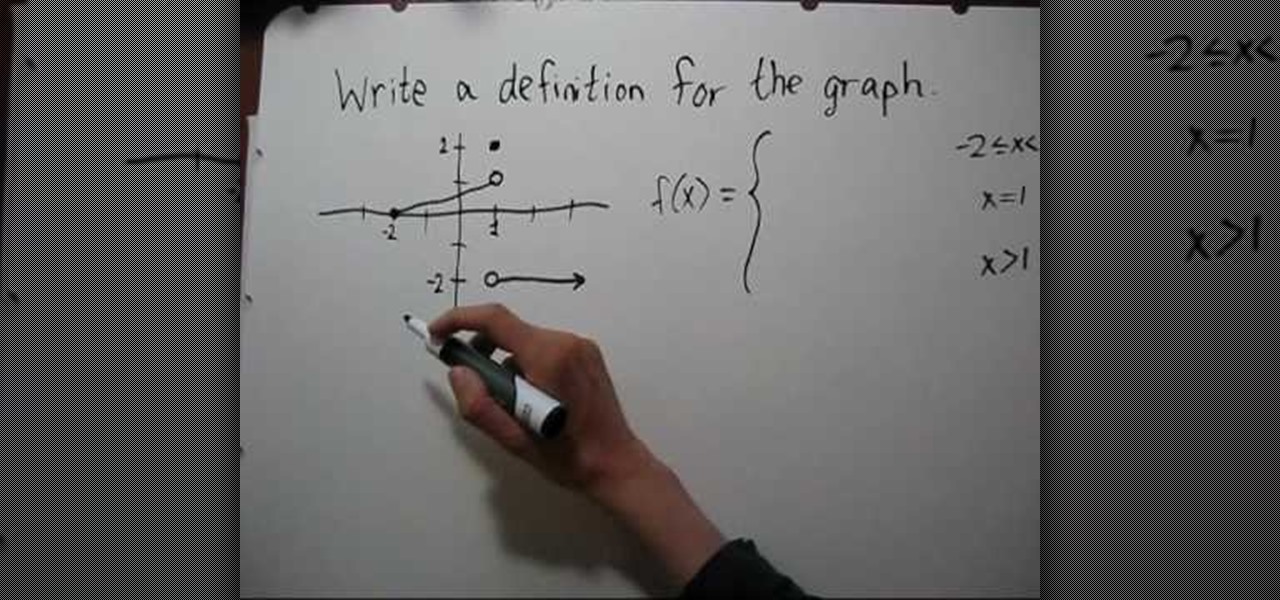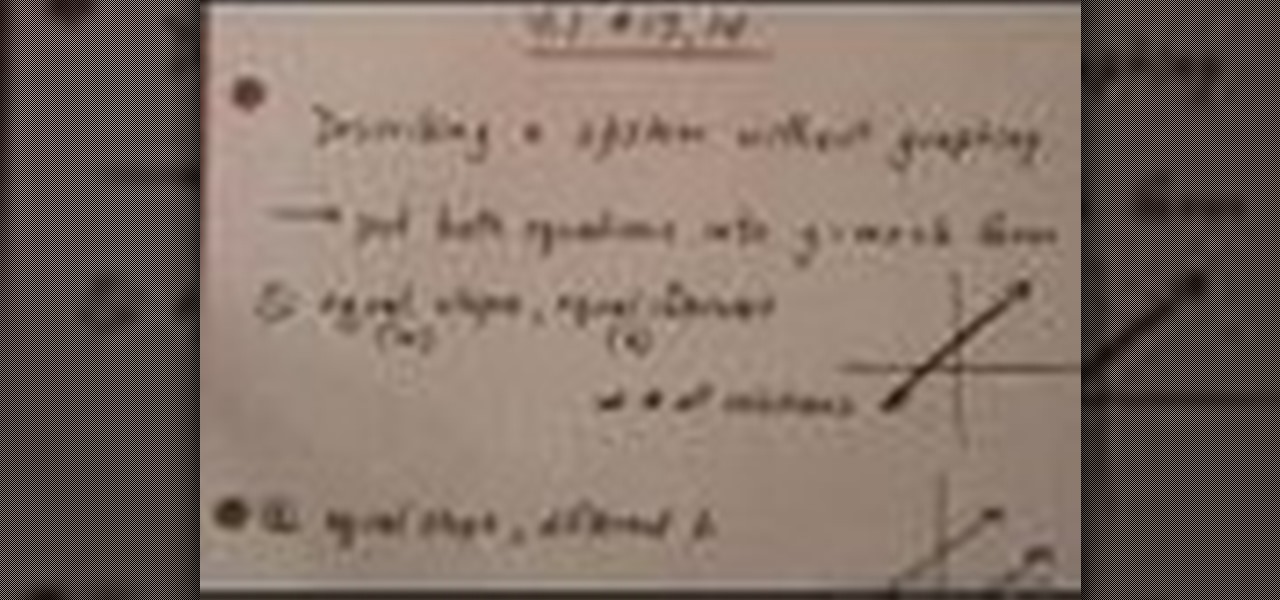
In this video tutorial learn how to graph an equation using the slope and y-intercept. To show how this can be done, the equation 4X-5Y=20 is used as an example. The first step that needs to be done is to convert the equation into the y=mx+b format where m is the slope and b is the intersection of the y-intercept. Simply solve the equation for Y and you get Y=4/5X-4. From this, you will find that the slope, or m, is equal to 4/5 and that b is the coordinates 0 and -4. On the graph, you will w...

Graphing a line in slope-intercept form is easy in simple after watching this video. In this math tutorial, you'll be guided step-by-step how to graph a line from an equation in the y=mx+b format. The steps include determining the slope and the y-intercept, plotting the y-intercept on the graph, and finally applying the slope to connect the points. The video guides you through the entire process by illustrating and demonstrating all the necessary steps, thus making graphing a snap.
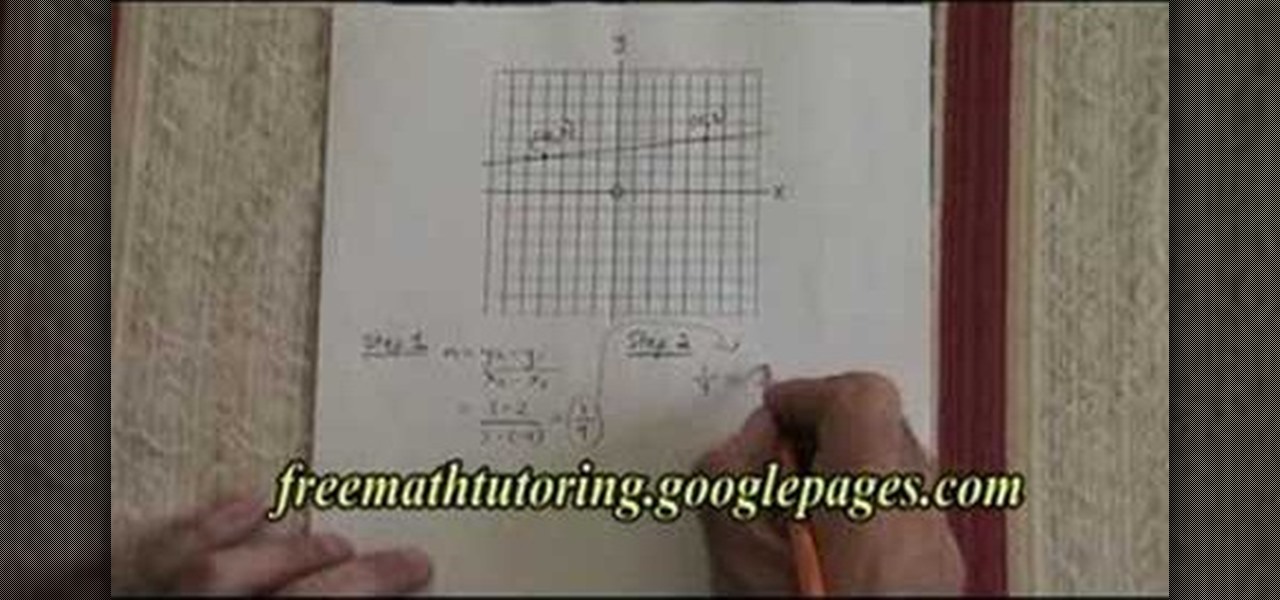
In this tutorial the instructor shows how to derive a straight line equation. He shows us a process that consists of two steps. In step one he uses the slope formula to obtain the slope of the line which is the ratio of difference of y-coordinates and difference of x-coordinates. Now in the step two he uses the slope he obtained in the first step and equates it two a another slope derivation which uses a generic x, y variables and a real point. Now solving this equation he arrives at the equa...
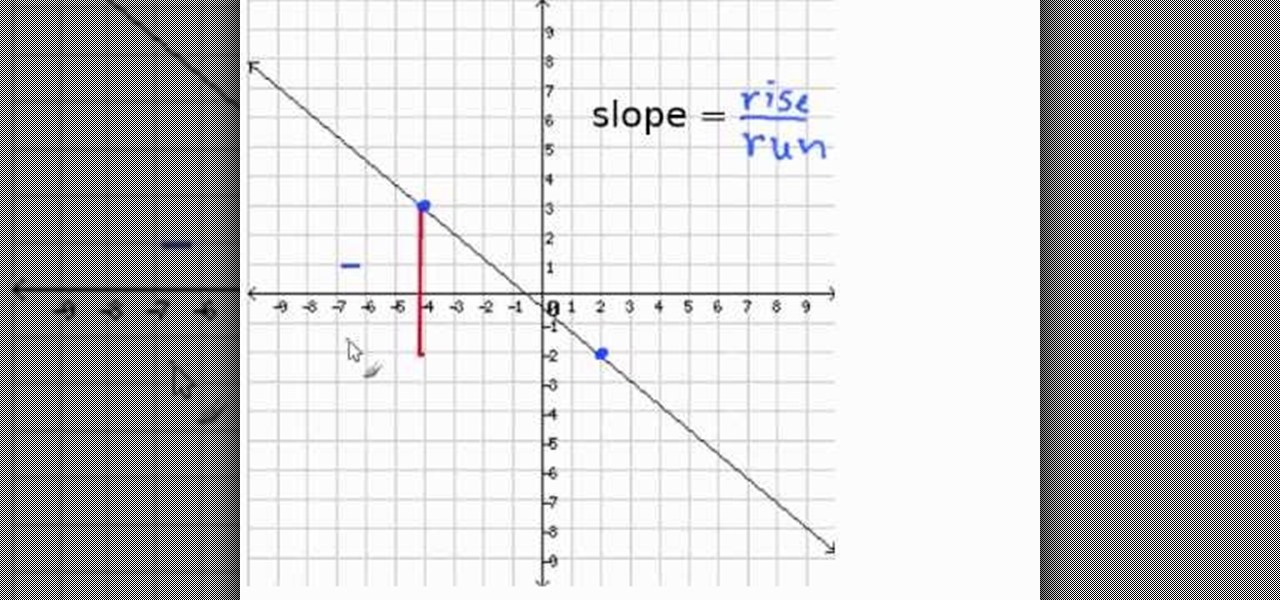
If you watch this video, you will learn what slope is, and how to find it. Slope is defined as rise divided by run, where rise in the increase the Y coordinate and run is the increase in the X coordinate. For example, if you pick two points, you can travel from the left point to the right point. However many points you go is the run. How far up you go is the rise. For example, if your rise is 4 and your run is 2, then you divide 4 by 2 to get your slope, 2. When you're finding the rise, if yo...

Transferring from a slalom water ski to your bare feet can be difficult but is one good way of learning to barefoot ski. Learn how to transfer from a slalom ski in this barefoot water skiing video tutorial. Take action: keep toes lifted, move quickly, and put one foot on the water first. Paul, the instructor in this how-to video from Live Strong, is a current member of the Canadian National Barefoot Water Skiing Team. He also teaches bare footing in Florida. He lives, eats, and breathes the s...

Once you can stand up and barefoot water ski, learn some basic tricks to impress your friends and family. Learn how to do basic barefoot water skiing tricks in this water sports video tutorial. Take action: learn one foot barefoot water skiing, keep feet and arms bent, and begin with slow and steady movements. Paul, the instructor of this how-to video, is a current member of the Canadian National Barefoot Water Skiing Team. He also teaches bare footing in Florida. He lives, eats, and breathes...

Crossing boat wakes on one water ski can be very difficult and takes a lot of practice. Learn how to cross wakes on a slalom ski in this water skiing video lesson. Take action: keep balanced, avoid leaning to the side, allow rope to move you around wake, and avoid big bounces. Paul, the instructor in this how-to video from Live Strong, is a current member of the Canadian National Barefoot Water Skiing Team. He also teaches bare footing in Florida. He lives, eats, and breathes the sport. A nat...

Learning to cross the boat wake on water skis can be difficult and scary but is also very fun. Learn how to cross the wake on water skis in this water skiing video lesson. Take action: keep knees bent and arms straight, focus on boat, and pay attention to direction. Paul, the instructor in this how-to video from Live Strong, is a current member of the Canadian National Barefoot Water Skiing Team. He also teaches bare footing in Florida. He lives, eats, and breathes the sport. A native of Toro...

Getting up on the water on water skis is difficult for first timers but can be very rewarding. Learn how to get up on water skis for the first time in this water skiing video lesson. Take Action: do not pull arms, keep knees bent and arms straight. Paul, the instructor of this how-to video from Live Strong, is a current member of the Canadian National Barefoot Water Skiing Team. He also teaches bare footing in Florida. He lives, eats, and breathes the sport. A native of Toronto, Canada, he is...

After water skiers get the basics down, it's time to move onto trick water skiing. Practice advanced trick water skiing with tips from a trick water skier in this free video series on water skiing.

Need some help figuring out how to find the slope of a linear function? See how it's done with this free video algebra lesson. Need help finding the From Ramanujan to calculus co-creator Gottfried Leibniz, many of the world's best and brightest mathematical minds have belonged to autodidacts. And, thanks to the Internet, it's easier than ever to follow in their footsteps (or just finish your homework or study for that next big test). With this installment from Internet pedagogical superstar S...

Need to graph a line in slope-intercept form (y=mx+b)? See how it's done with this free video math lesson. Need help finding the From Ramanujan to calculus co-creator Gottfried Leibniz, many of the world's best and brightest mathematical minds have belonged to autodidacts. And, thanks to the Internet, it's easier than ever to follow in their footsteps (or just finish your homework or study for that next big test). With this installment from Internet pedagogical superstar Salman Khan's series ...

Need to know how to calculate the slope of a line? This free video algebra lesson will teach you everything you'll need to know. From Ramanujan to calculus co-creator Gottfried Leibniz, many of the world's best and brightest mathematical minds have belonged to autodidacts. And, thanks to the Internet, it's easier than ever to follow in their footsteps (or just finish your homework or study for that next big test).

In this episode of Southwest Yard and Garden Curtis Smith shows you how to turn a steep slope into a usable garden. By building walls along the slope using serpentine designs he shows you how to obtain a compromise of both strength and artistic design. Starting with a good concrete footer and rebar you can construct a retaining wall strong enough to hold the weight of the slope. Materials such as wood and railroad ties can be used but may not stand the test of time as the weight of the soil c...

A pair of straight lines can be parallel lines or perpendicular lines or neither. Two lines are said to be parallel when their slopes are equal. Two parallel lines never intersect each other. On the other hand two lines are perpendicular when the product of their slopes is equal to -1. Two perpendicular lines intersect only once and at right angles. So when you are given two lines and asked to find if they are parallel or perpendicular lines, first compute the slope of the lines. Identify two...

This video details how to draw a penguin that is skiing downhill. You start off by drawing the eyes in an oval shape, and drawing a line cutting them in half for the eyelids. Don't forget dots for eyes! Following that, you draw the penguin's mouth and the top half of the body, including the flipper. You will next draw the ski poles and the lower half of the body. Of course, in order to ski the penguin will need two feet, and two skis so you should probably draw those too. You can now add deta...

To do this, there are many ways to approach this problem. One way is to look at the change in Y over the change in X by looking at the points on the graph. Another way is to use the equation Y2-Y1 over the equation X2-X1. In other equations where you are given a graph, you may be asked if the slope is positive, negative, or zero. To determine this, look at the line in the context of moving from left to right along the graph. If the line graphed is going down as you move from left to right, th...

Learn how to determine the equation of a line with this tutorial: The equation of a line can be determined by two given conditions.

Getting up for barefoot water skiing with the handle is a great start for beginning water skiers. Learn how to get up on the handle for barefoot water skiing in this water sports video tutorial. Take action: keep feet crossed and take your time waiting until comfortable to pull up. Paul, the instructor in this how-to video from Live Strong, is a current member of the Canadian National Barefoot Water Skiing Team. He also teaches bare footing in Florida. He lives, eats, and breathes the sport. ...

Getting up for barefoot water skiing is made much easier with a boom pole. Learn how to get to your feet with the help of a boat boom in this barefoot water skiing video tutorial. Take action: keep holding the boat boom, don't get on feet too fast, and stand into position slowly. Paul, the instructor in this how-to video from Live Strong, is a current member of the Canadian National Barefoot Water Skiing Team. He also teaches bare footing in Florida. He lives, eats, and breathes the sport. A ...

A topic which is taught during school days: The slope - intercept equation of a line in a 2 dimensional space.

Interested in putting a linear equation in slope-intercept form? See how it's done with this free video math lesson. Need help finding the From Ramanujan to calculus co-creator Gottfried Leibniz, many of the world's best and brightest mathematical minds have belonged to autodidacts. And, thanks to the Internet, it's easier than ever to follow in their footsteps (or just finish your homework or study for that next big test). With this installment from Internet pedagogical superstar Salman Khan...

This video walks you through the steps of solving slope and rate of change. This excellent video shows you a clean blackboard, with the instructors voice showing exactly what to do. Don't fret, any question you may have, will be answered. Watching this video will make you feel like your back in the classroom but rather comfortably from your home.

This video walks you through the steps of graphing a line with slope intercept form (y= mx + b). This excellent video shows you a clean blackboard, with the instructors voice showing exactly what to do. Don't fret, any question you may have, will be answered. Watching this video will make you feel like your back in the classroom but rather comfortably from your home.

In this video the tutor shows how to graph a straight line using the rise over run method. The rise over run trick allows you to graph a straight line as long as you have a starting point and a slope value in the form of a fraction. The first step is to graph the starting point. In the second step he states that the numerator of the slope is rise and the denominator of the slope is run. He says that the rise is vertical and the run is horizontal and shows how do rise and run using those value...

In this tutorial the instructor shows how to find the Y-Intercept given the equation of the line in Point-Slope form. He shows how to do this with an example. He tells to substitute the value of x to zero to find out Y-Intercept as Y-Intercept is nothing but the point where the line meets x-axis, where the value of x co-ordinate is zero. By watching this simple tutorial you can easily compute the Y-intercept of an equation in point slope form.

In this video the author shows how to find out if a Point lies on a Line in Slope Intercept Form. He shows it by an example where he takes a point, which is an ordered pair in the form (x, y) and a line, which is an first degree equation. Now he substitutes the values of x and y in the equation and checks if both the sides of the equation match. If it matches we can conclude that the point lies on the line. By following the method given in this tutorial you can find out if a given point lies ...

Another day, another company hopping on the virtual reality bandwagon. Today, it's fast food behemoth McDonald's, which is testing limited edition Happy Meal boxes that you can turn into a VR headset by punching out a couple holes and tearing along a few perforated seams. The resulting headset is a lot like Google Cardboard, with the lingering scent of fry grease.

In this tutorial, we learn how to determine if lines are parallel or perpendicular. You will be given two straight line equations. First, remember that parallel lines have equal slope, identical to each other. Perpendicular lines have negative reciprocal slopes. For example, 2/3 and -3/2 would be a perpendicular line. If you think of parallel lines, then you can graph them to see what they look like when written down. Then, graph the other lines to see what they look like as well. Once you un...

In this video, we learn how to derive and use the slop formula. The slope of a line is equal to change in y divided by the change in x. First, put the first point on the coordinate point. Then, represent the X and Y by X1 and Y1. Then, put the second point on the plane, representing the coordinates with X2 and Y2. Now, with these two points, draw a straight line and derive the formula from here. The change in X will be from X1 to X2. Now, replace that with the change in X and do the same for ...

Learn how to find the slope and y intercept of a line equation in algebra. This free video lesson will teach you everything you'll need to know. From Ramanujan to calculus co-creator Gottfried Leibniz, many of the world's best and brightest mathematical minds have belonged to autodidacts. And, thanks to the Internet, it's easier than ever to follow in their footsteps (or just finish your homework or study for that next big test).

Learn how to identify the slope and y-intercept of a linear relation when given an equation of a linear relation with this free video lesson. From Ramanujan to calculus co-creator Gottfried Leibniz, many of the world's best and brightest mathematical minds have belonged to autodidacts. And, thanks to the Internet, it's easier than ever to follow in their footsteps (or just finish your homework or study for that next big test).

Are you "just not a math person"? Hogwash. Everyone seems to think that at one point in their life. With a little practice and study, math will become more and more easy to understand. Start your journey towards become a "math person" with help from this video, which teaches how to graph a linear equation using slope-intercept form.

This video shows how to find the equation of the line perpendicular and parallel to a given line. The video starts off with an example, given the lines and the slopes (m). When 2 lines are parallel to each other, they have the same slope. When 2 lines are perpendicular to each other, the slopes multiplied together will give -1. Knowing these rules, the tutorial maker provides an example with numbers. He then leads each step of the process. Each step is written out in either black, red, blue o...

A method for solving a linear system with no solution is described. The method is described in 4 steps. The first step in the method is designed to solve a linear system that is described consist of “solving by graphing”. Details for “solving by graphing” first consist of finding points to graph using two different equations. The second step in the method consist of placing the points from both equations on the same graph in order to find out if bo...

This tutorial teaches you how to find a mathematical equation of a line given 2 points that exists on the line. The tutorial starts off with 2 points labeled (2,-4) and (3,6). The first step is to determine the slope of the line using the formula given in the tutorial in blue. The slope is then solved as 'm'. Plug the slope and the points into another formula given in green. The tutorial maker provides a tip that one can use x1 and y1 or x2 and y2, however, it must be consistent. After, solve...

In this video the instructor talks about parallel and perpendicular lines. Parallel lines are lines whose slope is the same. Now take the equations of a couple of parallel lines. Graph those lines on a coordinate axes and you can see that the lines are parallel to each other and never intersect each other. Perpendicular lines are those whose product of slopes is negative one. Perpendicular lines intersect each other and they make a perfect 90 degrees with each other at the point of intersecti...

This video shows how to find the formula of a piecewise function when given a graph. The first step is to write a definition for the graph, which is done by identifying the different domains shown in the graph. The second step is writing formulas for each domain specified by the lines in the graph. The point-slope formula is used to identify the slope and y-intercept for the leftmost domain, which has a sloped line. A point and horizontal line make for simpler equations in the other pieces of...

This videos explains how one can easily find the parallel line to a given mathematical equation. He starts by explaining what it means for two lines to be parallel mathematically speaking. Defining two lines, then comparing the slope of both lines you can mathematically determine that they are in fact parallel. He then moves to common math problems found on tests where you are given a point and a linear equation. He then forms a T-table with one column being line one and line two and illustra...

This tutorial looks at how to describe a linear system without actually graphing it. In order to do that, you will need to convert both equations of a problem into the Y=mx+b format. Once you have done this, you will be analyzing the m and b values. There are a few rules to follow. If the slopes (or m) and the Y intercepts (or b) are equal, there are an infinite number of solutions (or dependent equations). A second rule is if the slopes are equal and the Y intercepts are different, then the ...












